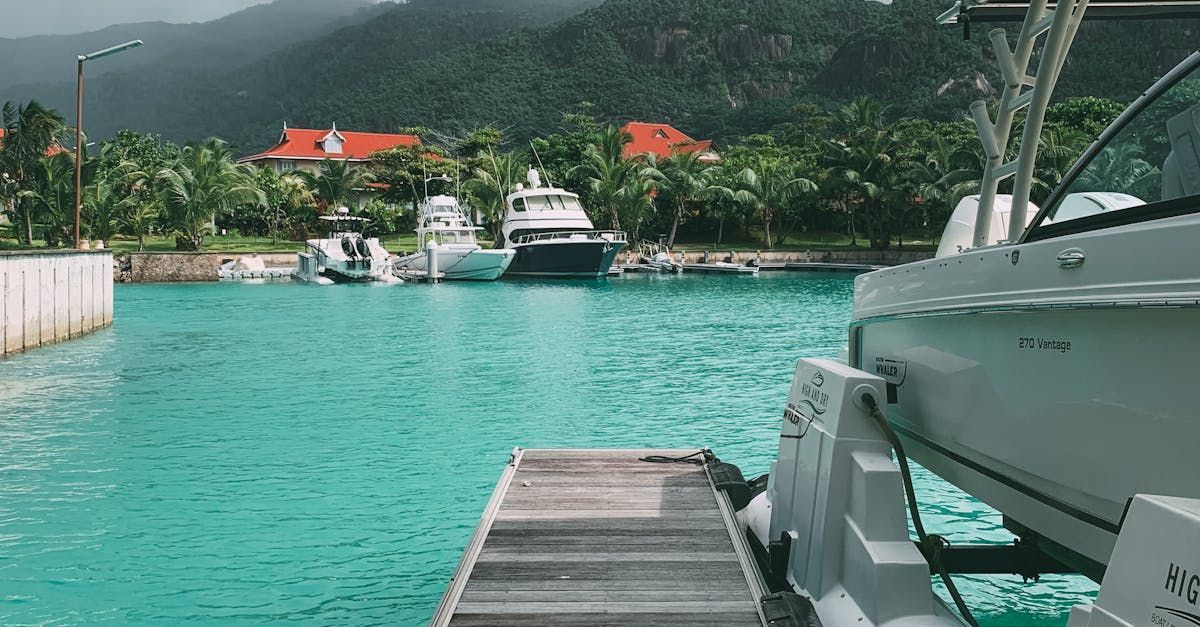ADA Compliant Floating Docks: Ultimate Guide 2024

The Ultimate Guide to ADA Compliant Floating Docks
Creating ADA compliant floating docks ensures accessibility for everyone, including individuals with disabilities. This guide will help you understand the key aspects of designing and maintaining floating docks that meet the Americans with Disabilities Act (ADA) standards.
Key Takeaways
- ADA compliance in dock design is essential for inclusivity.
- Floating docks offer flexible and adaptable solutions.
- Proper design includes accessible routes, gangways, railings, and boat slips.
Understanding ADA Compliance in Floating Docks
ADA compliance involves designing public and private facilities to be accessible to individuals with disabilities. When it comes to floating docks, this means ensuring that the docks, gangways, ramps, and other associated structures are navigable for all users.
Benefits of ADA Compliant Floating Docks
- Inclusivity: Ensures everyone, regardless of physical ability, can enjoy water activities.
- Safety: Reduces the risk of accidents and injuries.
- Legal Compliance: Meets federal regulations, avoiding potential fines and legal issues.
- Enhanced Property Value: Makes properties more attractive to a broader audience.
Design Elements of ADA Compliant Floating Docks
To make floating docks ADA compliant, several design elements need to be considered:
1. Accessible Routes
Accessible routes are pathways that connect the shore to the dock. They should be stable, firm, and slip-resistant.
2. Gangways and Slope
Gangways connect the shore to the floating dock. The slope of the gangway is crucial. ADA guidelines state that the slope should not exceed 1:12, which means for every inch of height, there should be at least 12 inches of length.
3. Railings, Guards, and Handrails
Railings and guards ensure safety, especially for those who rely on handrails for balance. They should be between 34 and 38 inches in height.
4. Edge Protection
Edge protection prevents wheelchairs from going off the dock. This can be achieved through curbs, barriers, or extended railings.
5. Boat Slips
Boat slips should be wide enough to accommodate wheelchairs. The ADA recommends at least 60 inches of width for accessibility.
Real-Life Examples of ADA Compliant Floating Docks
At Baker Marine Contracting, we've helped numerous clients achieve ADA compliance in their waterfront projects. For example, we recently completed a project on the Wando River, where we installed a floating dock with all necessary ADA features. The client was delighted with the outcome, especially the safety and accessibility improvements.
Step-by-Step Guide to Building an ADA Compliant Floating Dock
1. Initial Consultation
The process begins with understanding the client's needs. This includes site assessment and discussing specific requirements.
2. Design Phase
In this phase, we create detailed plans that incorporate all ADA requirements. This includes the layout of accessible routes, gangways, railings, and boat slips.
3. Permitting and Approvals
We handle all permitting and ensure that the design meets local, state, and federal regulations.
4. Construction
Using high-quality materials and expert craftsmanship, we build the floating dock to the specified design.
5. Final Inspection
Before the project is completed, we conduct a thorough inspection to ensure all ADA requirements are met.
Maintenance of ADA Compliant Floating Docks
Maintaining ADA compliance is an ongoing process. Regular inspections and maintenance are crucial to ensure safety and accessibility.
Regular Inspections
Inspect the dock for any wear and tear, especially focusing on railings, gangways, and accessible routes.
Cleaning
Keep the dock clean and free from debris to maintain a slip-resistant surface.
Repairs
Address any damage immediately to prevent accidents and maintain accessibility.
Upgrades
As technology and materials improve, consider upgrading your dock to further enhance accessibility and safety.
Challenges and Solutions in ADA Compliant Dock Design
Designing an ADA compliant floating dock can present several challenges, but with proper planning and execution, these can be overcome:
Fluctuating Water Levels Solution: Use adjustable gangways and floating dock sections to adapt to changing water levels.
Limited Space Solution: Optimize design layout to make the best use of available space, ensuring compliance without compromising functionality.
Budget Constraints Solution: Prioritize essential ADA features first, and plan for future upgrades as budget allows.
Key Features of ADA Compliant Floating Docks
- Non-slip surfaces: Ensuring all walkways and gangways have non-slip surfaces to prevent accidents.
- Wide gangways and boat slips: Providing enough space for wheelchair maneuverability.
- Adjustable elements: Gangways and docks that can adjust to changing water levels.
- Safety railings: Properly placed and sturdy railings for added safety.
Frequently Asked Questions (FAQs)
What is the maximum slope for an ADA compliant gangway? A: The maximum slope is 1:12, meaning one inch of rise for every 12 inches of length.
Are there specific materials recommended for ADA compliant docks? A: Yes, materials should be stable, firm, and slip-resistant. Composite decking is a popular choice.
How often should ADA docks be inspected? A: Regular inspections should be conducted at least twice a year, or more frequently if the dock is heavily used.
Key Considerations for Property Owners
- Understand the regulations: Familiarize yourself with ADA requirements to ensure compliance.
- Work with professionals: Partner with experienced contractors who understand ADA standards.
- Maintenance plan: Regular upkeep is essential to maintain compliance and safety.
Final Thoughts
Creating and maintaining ADA-compliant floating docks is not just about meeting legal requirements; it’s about making waterfronts accessible and enjoyable for everyone. At Baker Marine Contracting, we are committed to delivering high-quality, inclusive dock solutions that enhance the waterfront experience for all users.
By following the guidelines and tips outlined in this guide, you can ensure your floating dock is safe, accessible, and compliant with ADA standards. Whether you're building a new dock or upgrading an existing one, prioritizing accessibility will benefit all users and add value to your property.
If you're ready to start your ADA-compliant dock project, contact Baker Marine Contracting today for a consultation and estimate. Our team of experts is here to help you every step of the way.


